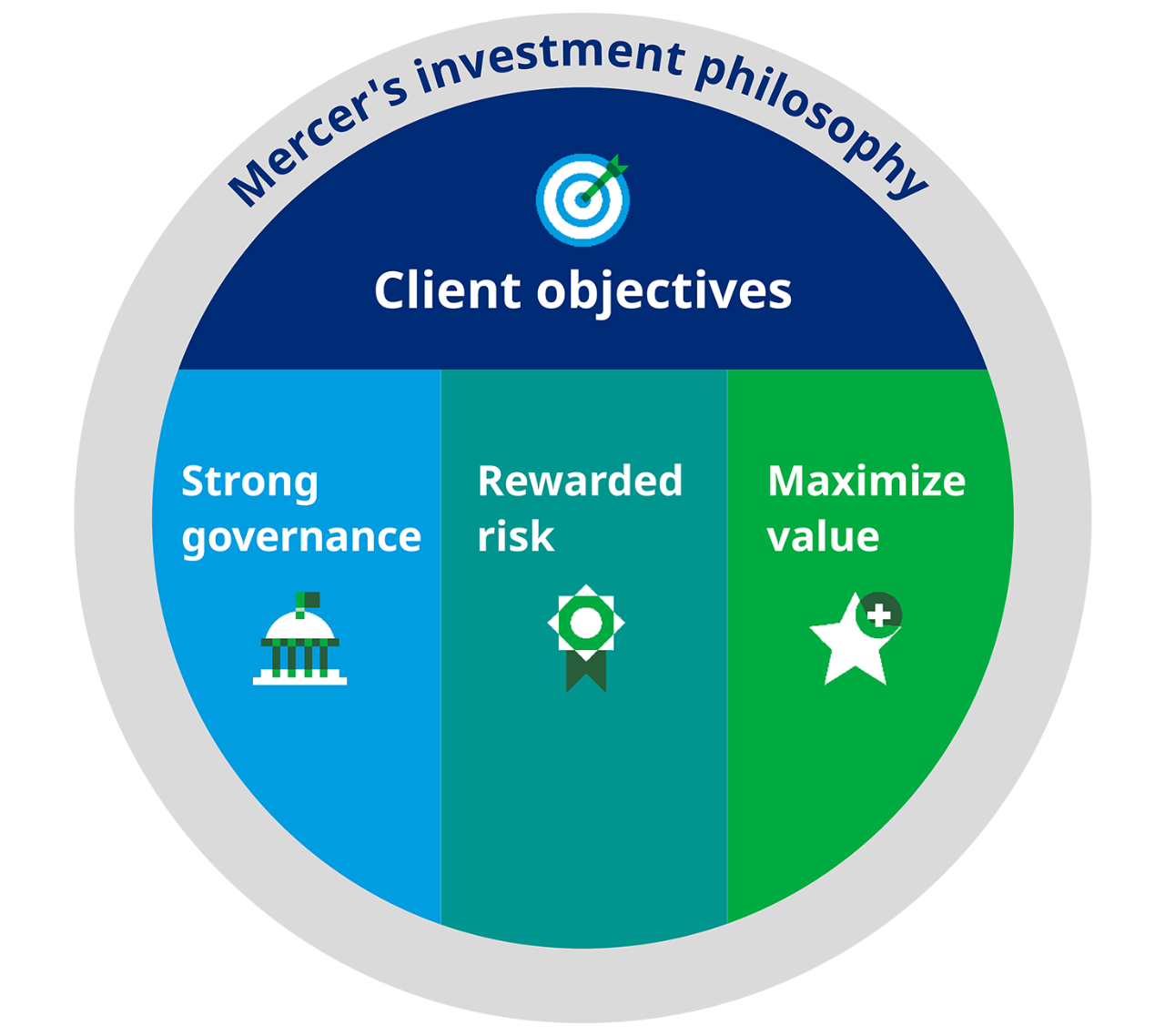Investment philosophy
Client objectives
Strong governance
Effective stewardship and engagement with companies, policymakers and stakeholders plays and important role in value creation through the deployment of investor rights and influence. Clear stewardship objectives, meaningful escalation mechanisms in response to unsuccessful engagements, and the feedback loop between stewardship activities and portfolio positioning (including, in some cases, exclusions) are all key to effective stewardship.
Stewardship, which involves using voting rights and engaging with companies, can be enhanced through industry-based collaborative initiatives that promote the sharing of public information among investors. This sharing of information helps support each investor in making well-informed decisions.
Rewarded risks
Risk is multidimensional, and a client’s context — including their time horizon — matters. Volatility is not the only measure of investment risk. For many clients, tracking error versus the market or failure to generate sufficient income or long-term growth is more important.
More widely, asset value is not the only source of risk: liquidity, leverage, operational, regulatory and reputational risks are among the wide range of risks that may need to be taken into account.
Maximize value
This can be achieved via a bias towards higher-quality alpha sources that have shown to be the most repeatable and evidence-based. Skilled managers who demonstrate observable characteristics and follow approaches that set them apart from the average can add value over time, especially in less efficient markets.
However, even the most skilled asset managers experience periods of underperformance. Success — which should be defined and measured — requires understanding, conviction and patience. Past performance is not a reliable indicator of future results. Fees should align with the ability to generate excess return.
While strategic asset allocation is important for long-term objectives, a static approach may not capture all return-seeking opportunities because asset prices can deviate from fair value. Implementing short- to medium-term asset allocation views can generate improved performance.
However, dynamic asset allocation requires skill, insight, fortitude and risk tolerance. It adds risk relative to a strict strategic asset allocation target and may not always be successful. Careful implementation and appropriate client governance are necessary for effective dynamic asset allocation.

